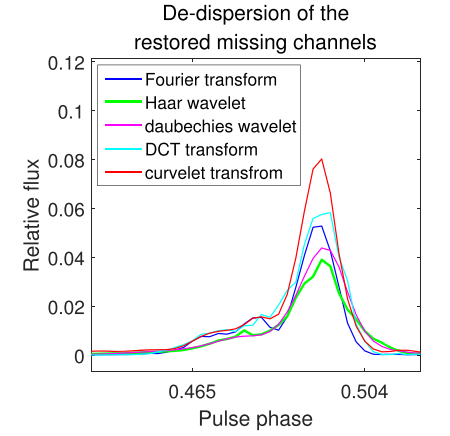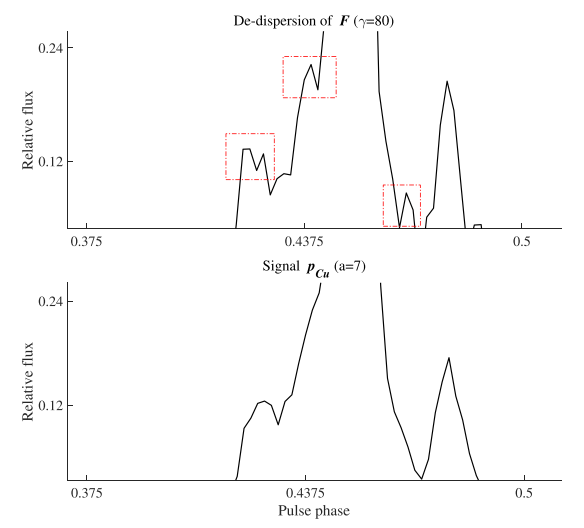

Researchers propose RFI mitigation and signal restoration method for pulsar signals
Pulsar signals obtained with radio telescopes are extremely weak. Generally, there are two primary difficulties in pulsar signal processing, one is the radio-frequency interference (RFI) mitigation, and the other one is information loss due to the preprocessing and mitigation itself.
Therefore, the innovations in RFI elimination method are meaningful to carry out further studies on the astronomical measurements, such as pulsar timing.
Using pulsar data collected by the NanShan 26-m Radio Telescope (NSRT) from 2011 to 2014, researchers from the Xinjiang Astronomical Observatory (XAO) of the Chinese Academy of Sciences made a study on RFI mitigation and signal restoration, which is based on sparse representation and compressed sensing (CS).
The wavelet transform and discrete cosine transform were applied as a sparse promoting term to aid the optimization. Results proved that the sensing mechanism has better performance in signal restoration for the preprocessed channels (see Figure 1), and plays a positive role in mitigating "on pulse" RFI (see Figure 2). In an application of pulsar timing, no systematic biases or underestimated uncertainties are caused. This method can improve the timing accuracy to a certain extent by reducing the timing residuals and the estimated errors.
The results were published in The Astrophysical Journal.

Figure 1. Restoration results (after dedispersion) of the preprocessed zero channels by CS with sparse operators.

Figure 2. Result of “on-pulse” RFI mitigation of PSR J0332 + 5434
Contact: SHAN Hao
Xinjiang Astronomical Observatory
E-mail: shanhao@xao.ac.cn
Paper link: https://iopscience.iop.org/article/10.3847/1538-4357/ac8003
Attachment Download: